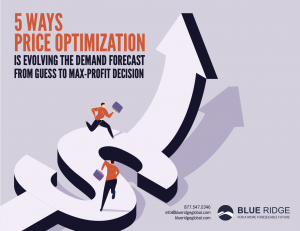6 Pricing Strategies You’d Be Dumb to Ignore: Strategy #1
Intro to this Series
 One of the most painful lessons distributors and retailers are learning right now is that, when it comes to pricing strategy, a pandemic causes all the garbage to float to the top.
One of the most painful lessons distributors and retailers are learning right now is that, when it comes to pricing strategy, a pandemic causes all the garbage to float to the top.
Exponential growth in online sales means prices are now ultra-transparent, creating problems for the way distributors and retailers price their inventory.
The world's reaction to COVID-19 and resulting shift to online buying leaves these companies with one very important takeaway...
Pricing strategies that used to work no longer work in the post-pandemic world. You need to rethink how you set prices because the new normal is here to stay.
We dedicate this series to 6 pricing strategies you can't ignore, if you want to get through this pandemic and back on track for profitability.
Strategy #1: Establish Pricing Consistency
In an ecommerce boom like right now, having pricing inconsistencies is pretty much a death sentence.
Record growth in ecommerce exposes dangerous issues with pricing inconsistency across products, locations and channels. That includes in-store, online, phone orders/direct sales and third parties like Amazon.
Record Growth in Ecommerce is Here to Stay
With most U.S. states having a shelter-in-place mandate,
- 52% of U.S. consumers have shopped for groceries online recently because of the COVID-19 pandemic, and 20% are first-time shoppers*
- Respondents said they’ll keep up over 50% of their online shopping even after life returns to a new normal where they can venture out of their homes*
- In Europe, 13% of consumers said in early April that they were planning to browse online e-tailers for the first time. In Italy alone, e-commerce transactions have risen 81% since the end of February.**
It Starts with Price Sensitivity
More online sales in the “next normal” means distributors and retailers will have to figure out how to measure price sensitivity and the impact of price changes on demand.
Online sales are more price sensitive, so that’s tricky. Establishing pricing consistency will require deep-and-wide analysis of price sensitivity and customer willingness-to-pay across all products. Unless you have a team of 1,000 data scientists at the ready, you’ll want to implement price optimization software.
Price Optimization Software: The Problem with Cost-Plus Pricing
Price optimization software allows you to quickly and accurately uncover valuable information across all products to maximize profitability – versus operate on a cost-plus basis.
For example, why is your higher-quality pipe fitting or oil filter priced lower than your lower-quality one? In a cost-plus pricing scenario where you are selling more of the higher-quality product, you may get a lower cost and end up with a lower price. That inconsistency will be both obvious and damaging online.
A price optimization solution does the heavy lifting to identify “Good-Better-Best” price tiering to optimize prices for profitability and make them consistent, with untapped efficiency.
Learn More
We recently launched a Price Optimization solution capable of driving a 30% gross profit improvement by optimizing pricing across all products, channels and locations.
To see how this works, click here.
Or request our new whitepaper: “5 Ways Price Optimization is Evolving the Demand Forecast from Guess to Max-Profit Decision” by contacting nate.schmal@blueridgeglobal.de.
Go to Strategy 2: You'd Be Dumb to Ignore Competitor Pricing
*Source: MSN.com and Fabric research: “A Sector Soars: Online Grocery Numbers Are Officially Crazy”
**Source: McKinsey & Company report, April 2020



Comments are closed.